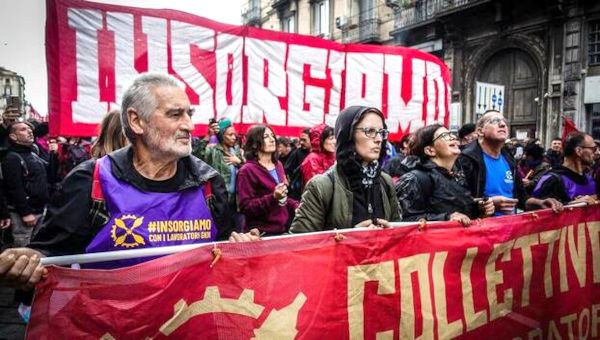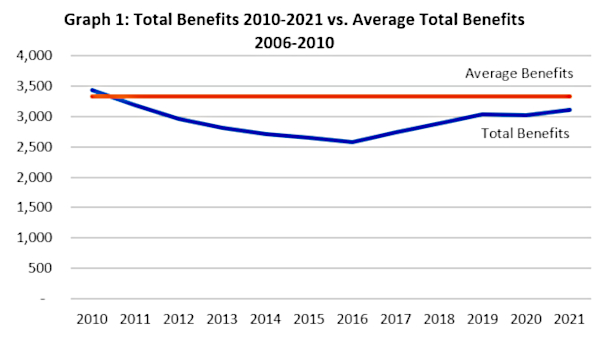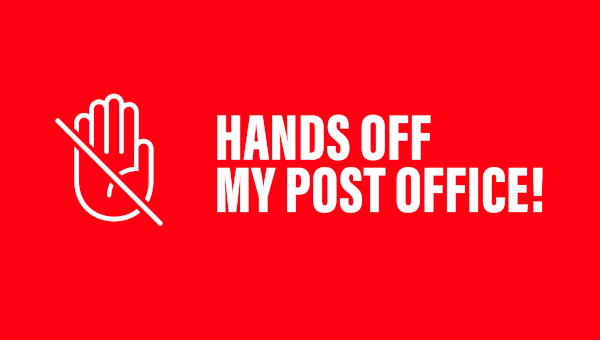A major confrontation is in the making at Canada Post. On the one hand, post office management is seeking to extract a series of far ranging concessions from its workers. On the other, those workers and their union, Canadian Union of Postal Workers (CUPW), are not simply prepared to resist these demands, but are determined to use the opportunity to negotiate a new collective agreement to pursue an agenda that advances equality within the workplace and the expansion and renewal of vital public services. The importance of this struggle lies in the fact that its outcome will be of enormous significance not only to the lives of postal workers, but to all public sector workers and indeed to future workers as well.
 Canada Post has once again taken an aggressive approach to the current negotiations, tabling a long list of demands for significant concessions in work rules and benefits that would roll back many of the advances made by postal workers over the past two decades. Indeed, they applied for conciliation, the first step toward putting themselves in position to lockout CUPW before all these demands were even tabled.
Canada Post has once again taken an aggressive approach to the current negotiations, tabling a long list of demands for significant concessions in work rules and benefits that would roll back many of the advances made by postal workers over the past two decades. Indeed, they applied for conciliation, the first step toward putting themselves in position to lockout CUPW before all these demands were even tabled.
The Issues
The most striking concession demanded was to call for a two-tier pension system where current workers would continue to have a defined benefit plan, but new hires would merely have a defined contribution plan [really just a glorified RRSP], effectively dividing postal workers along generational lines. While the shift to defined contribution plans – in whole or just
for new workers – has become fairly common in the corporate sector, they are rare in the public sector and then have only involved small groups of workers. Canada Post’s rationale is that meeting the new legal requirement that all pension plans within federal
jurisdiction be ‘fully funded’ [i.e. have enough funds to cover all liabilities in the event they totally ceased operations entirely] would be unaffordable. However, the requirement itself is unrealistic as the post office, like other public organizations is
not about to disappear and the post office should join CUPW in opposing it. This demand, together with demands for changes in the collective agreement to allow for the greater use of part-time and casual labour reflects the permanent austerity imposed on the public sector and is intended to ensure the public sector labour market tracks the spread of precarious work in the private sector.
Canada Post’s demands for concessions aren’t the only issues involved in the dispute. The back-to-work legislation in 2011 that brought an end to the previous round of negotiations saddled CUPW members with an iniquitous contract and postal workers have some demands of their own. Understandably, they are looking for a reasonable pay increase, but they are also demanding pay equity for CUPW’s rural mail carriers, mostly women, who earn almost 30 per cent less than urban mail carriers. Canada Post had long insisted that rural mail
carriers were independent contractors who had no right to unionize. In 2003 CUPW managed to get Canada Post to agree to recognize the rural mail carriers’ right to unionize but had to acquiesce to their existing lower pay rate. Since then, they have struggled to
eliminate it. It was a major issue in the last round of negotiations but progress was derailed by the Tories’ 2011 back-to-work legislation which referred the dispute to binding arbitration under terms that were extremely unfavourable to postal workers.
Underlying these issues is a deep disagreement over the future direction of the post office. Due to technological changes associated with the internet, letter mail volumes have been falling, although parcel volume has grown. While the post office has earned a ‘profit’ virtually every one of the last 15 years, revenue growth has been quite modest, threatening its ability to meet the requirement to be self-sustaining. But whereas Canada Post’s strategy for dealing with this is to place the burden of adjusting to change on the backs of postal workers, and the citizenry by searching for ways to reduce labour costs and services [i.e. replacing door-to-door mail delivery with Community Mail Boxes], possibly in a lead up to privatizing mail delivery, CUPW is urging the post office to expand services.
Initially, this centred on calling for the creation of a postal bank using the post offices throughout the country as local branches as is common in many countries in the world from England to Japan. They argued that a postal bank would be a new source of revenue for the post office as well as providing desperately needed banking services in the many towns, reserves and poorer areas of cities that commercial banks have abandoned. Even where banks remain physically present, exorbitant fees and other requirements make them inaccessible to many poor people.
Recently, this vision has been substantially expanded. Working with ACORN, the authors of the LEAP Manifesto, the Canadian Postmasters and Assistants Association and Friends of Public Services among others, they have developed a view of the post office as playing a central role in building a more ecologically sustainable and more equal society. Titled Delivering Community Power, it envisions transitioning the post office to a green public institution that employs a fleet of renewably powered vehicles, provides charging stations for electric vehicles, serves as an innovation hub, and provides expanded services to the ill and elderly, with much of the financing coming from the revenues generated by a postal bank. This is probably the most imaginative proposal to come out of the labour movement in the west since the 1976 plan developed by Lucas Aerospace workers in England to counter the threat of layoffs due to technological change and spending cuts by converting the arms manufacturer to peaceful production. Developing Community Power is still a ‘work in progress’ that holds out the prospect of becoming a larger conversation about the future of Canada Post and other public services, as well as union bargaining strategies.
State of Negotiations
On July 5th, the 21 day ‘cooling off’ period that is part of the conciliation process under the Canada Labour Code ended, and the post office promptly gave the requisite 72 hours’ notice of its intent to lockout CUPW members – on July 8. It looked as if we were headed
for a repeat of 2011 when Canada Post locked out CUPW and the government promptly followed with back-to-work legislation. However, 2016 is not 2011 and the Trudeau Liberals are not the Harper Conservatives. It’s not just that the nasty divisive rhetoric of
the Harper era, not least the constant vilification of the public sector and public sector workers, [except for the police and prisons] has ceased. There have also been some concrete advances such as the reinstatement of the long form census as well as a long overdue expansion of the Canada Pension Plan.
That said, it is important not to overstate the magnitude of the changes or to ignore the many critical continuities. As the Liberals’ support for the Trans-Pacific Partnership (TPP) and the Comprehensive Economic and Trade Agreement (CETA) makes clear, the government remains committed to sustaining the neoliberal politics of freer markets that increase the power of capital and impose permanent austerity for the public sector and public sector workers. This pattern of modest positive changes together with continued fealty to an austerity agenda is evident in the Liberals’ approach to the post office as well. They have left the existing management regime headed by the Harper appointed CEO, Deepak Chopra, in place, and despite promising to restore door-to-door mail delivery, they only halted further cuts pending the completion of review of options for the future of postal services. It is likely that Canada Post’s rush to lockout CUPW partly reflected the regime’s desire to pre-empt any unwanted outcomes from that review.
But, this time around, the government was not so anxious for a work stoppage and/or prepared to legislate an end to one if it happened at this point. This is partly connected to the Ontario Supreme Court’s recent ruling that the Harper government’s 2011 back-to-work
legislation ending Canada Post’s lockout of CUPW violated the union’s freedom of association and interfered with the “balance of collective bargaining.” It also seems reluctant to mar the ‘sunny ways’ aura surrounding it. Nor could it ignore the impact of CUPW’s well-conceived bargaining and messaging strategy. As a result, Canada Post was forced to back track. First, it extended the deadline by 3 days and then on July 11, it withdrew the notice of its intent to lockout CUPW and announced a renewed commitment to negotiations.
This is not to suggest the government has much sympathy for CUPW’s demands. In this respect, Labour Minister MaryAnn Mihychuk’s suggestion that the parties consider binding arbitration is telling. It is common parlance that no arbitrator would issue a ruling in favour of people who are not yet employed by Canada Post. Further it is quite shocking that the Labour Minister would even suggest binding arbitration on the issue of the wage discrepancy between rural and urban letter carriers. As CUPW President Mike Palecek pointed out: “Paying women equally for work of equal value is the law of the land; it’s not something that can be awarded or withheld by an arbitrator.”
Looking Ahead
It would appear that we are in the midst of the ‘calm before the storm’. Evidently, Canada Post is committed to extracting concessions from its workforce and there is little likelihood that CUPW will acquiesce to Canada Post’s demands without a fight – not least to the demand for an inferior pension plan for future, younger, workers. Two-tier pay systems that require workers with different pay and/or benefits to work side-by-side offends most workers’ sense of justice and solidarity and many will go to great lengths to avoid this situation. In 2009, for example, steelworkers in Sudbury and Port Colborne struck for almost a year in an unsuccessful bid to block Vale Inco’s imposition of a two-tiered pension system. [Ed.: see Bullet No. 253 and Bullet No. 395.]
CUPW, with its commitment to equality between male and female workers, as well as full and part time workers, that goes back to the 1970s, is unlikely to act any differently. Indeed, when faced with an attempt by management to create a new lower classification in conjunction with the introduction of new technology back in 1974, they struck illegally to block it. For the same reason, CUPW is unlikely to simply abandon its demand for equal pay for rural carriers.
“Much will depend on the support those of us who are committed to social justice and equality, expanding public services and spaces and ecological sanity, can provide to CUPW.”
How this will play out remains to be seen with the Federal government being something of a wild card, albeit a crucial one given its ability to invoke the law and the power of the state. We can be certain, however, that much will depend on the support those of us who are committed to social justice and equality, expanding public services and spaces and ecological sanity, can provide to CUPW.
In this respect, the grassroots coalitions of union, student, anti-poverty and environmental activists that have already sprung up in cities such as Ottawa, Montreal, Halifax, Winnipeg, Toronto and Vancouver are encouraging, and no doubt there will be many others. However, it will be necessary to engage the major public and private sector unions with their much greater resources and potential mobilizing capacities – all of whose members have a real stake in the outcome. This is so clearly the case for unions in the federal public sector whose members will be next in line if Canada Post succeeds in imposing a two-tier pension system on CUPW. But it is also the case that unions in the private sector, many of whom are struggling to overcome the divisiveness created by having accepted two-tier wage and benefit systems, have a real stake in the outcome. A CUPW defeat would only strengthen the forces pushing them into the race to the bottom which is inimical with their members’ interests.
It is urgently necessary that the union leaderships take the initiative in building the requisite mobilization, in concert with CUPW. Unfortunately, past experience reveals that this can by no means be taken for granted. For example, meaningful efforts by USW, let alone
the CLC to build support for Vale Inco workers in 2009 were noticeably absent. As for the PSAC, its efforts to build support for a strike by a small group of its members working for the OLG [Ontario Lottery and Gaming Corporation, operates gambling in the province of Ontario] near Ottawa where pension issues were central to the dispute were inadequate and failed to prevent a significant defeat.
Activists need to find ways to put pressure on the leaders of both public and private sector unions, insisting that they go beyond perfunctory statements of support, and even promises of financial assistance, to communicate the importance of the issues to their members and to commit significant resources to mobilizing concrete solidarity with postal workers.
We also need to communicate support for postal workers to the government. Messages from individuals and groups to the government and individual MPs should not only call on the government to press the post office to drop its demands for concessions and respond positively to CUPW’s demands, but also express support for CUPW’s proposals for the future of the postal service. For details see www.CUPW.ca/CanadaPostReview. Equally importantly, we should also communicate support for expanding postal services directly to the Task Force on the future of Canada Post at www.Canada.ca/CanadaPostReview •





